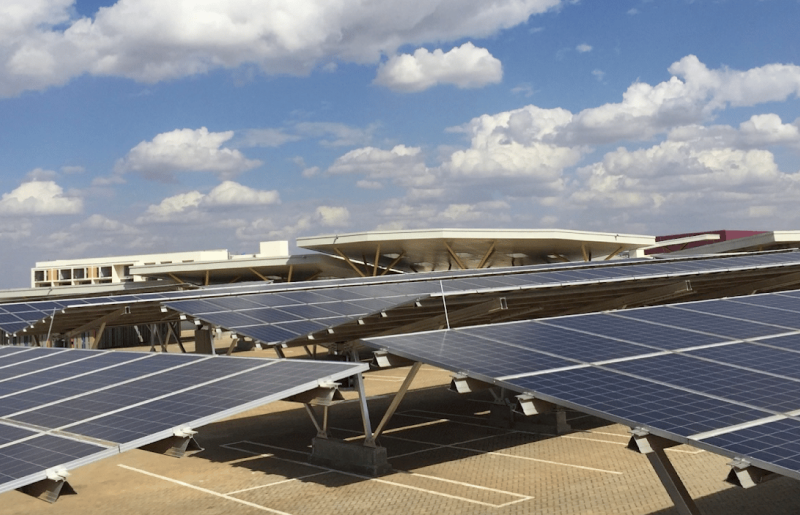Actis’ Garden City switches on largest solar carport system in Africa
- Sep 15, 2015
- Solar Advice
- 3 min read

Delivered through a collaboration between SolarAfrica and Solarcentury.
Africa’s largest solar carport was unveiled by Principal Secretary Eng. Joseph K Njoroge today at an opening event at Garden City Mall. The solar electricity it generates is being used by the retail tenants to power facilities such as the lights and escalators in the Mall. The solar carport is powerful enough to power 550 urban homes[1] in Nairobi every year.
The solar carport was enabled through a partnership between solar advisory and finance platform, SolarAfrica, and technical solar designer and contractor, Solarcentury, who opened its Nairobi office in 2013. In keeping with the Mall’s green ambitions, Actis were looking for a clean energy system that could produce clean energy and pay for itself through the energy it produces. By using solar electricity rather than grid energy, the Mall will cut carbon emissions by around 18,750 tonnes over the lifetime of the solar system[2].
Koome Gikunda, Director Actis Kenya commented: “Garden City is a project with lots of firsts in this market, but we are particularly proud of the solar carport. We knew that we wanted a solar component to the project early on but the upfront costs were prohibitive. We’re very grateful to SolarAfrica for stepping in, working closely with partners Solarcentury, and for helping us to realise our vision.”
Guy Lawrence, Director at Solarcentury in Kenya, commented: “Solar is a mature, reliable energy generation technology that can be deployed quickly and at scale. We are seeing more and more businesses in Kenya looking to invest in solar because of the multiple benefits it affords – notably, it enables organisations to take control of their long term energy spend. A system will produce free solar electricity for at least 25 years, the average lifetime of a system. Garden City’s solar hybrid system is the second we have built in Kenya and our Nairobi office is ready to deliver more systems for other forward-thinking projects like Actis’ Garden City.”
The system is located on the uppermost story of the car park at Garden City Mall, part of the Garden City integrated residential, retail park, hotel and office development on Nairobi’s Thika Superhighway. The system enables Garden City to capitalise on Kenya’s exceptional solar resource, while also providing shaded parking for customers. Once construction of the carport was completed, the solar panels were installed in a couple of weeks, and cost savings were realised as soon as the system was connected to the grid last month.
James Irons, CEO and Founder of SolarAfrica commented: “We created the SolarAfrica platform to unlock solar power solutions for commercial and industrial projects across Africa and Garden City is a great example of how our platform can enable solar systems. We offered Garden City a finance solution that meant they didn’t need to pay all of the upfront costs to design, procure and install the system.”
The Garden City carport installation will be paid for based on the power it produces and SolarAfrica will operate and maintain the system for 12 years, while providing guarantees covering power and equipment performance.
Mr Irons continued: “By providing this kind of finance solution, as well as a range of technical support services, we can help solar design and installation partners, like Solarcentury, to realise a solar project of this scale. It demonstrates that private sector investment in carbon mitigation projects is financially viable.”
The solar carport system has been designed using solar hybrid technology, a highly innovative energy solution and one of only a handful globally. During daylight hours, the solar carport generates solar electricity, and should the grid go down, the hybrid technology enables the carport to run in tandem with the diesel generator. When darkness falls, the Mall can switch to either grid energy, or a backup diesel generator if the grid is down. Reducing reliance on the grid and costly diesel enables significant cost savings at a time of high energy prices in Kenya.
[1] Assumed middle income homes.
[2] At least 25 years, based on an annual carbon saving of 745 tonnes. This is using DEFRA’s carbon factor: 1256 MWh X 0.596 = 748 tonnes p/a
Planning your organisation’s green energy road map is easier than it seems. Fill in our green energy goals questionnaire to identify the right alternative energy solution for your business.




